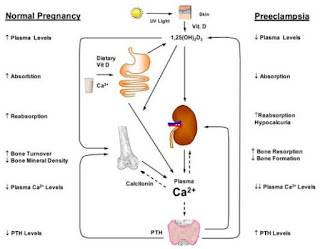More Pregnancy Fun
Swelling is something a lot of pregnant women experience
at some point throughout pregnancy. It usually comes along later - commonly in
the third trimester – and while some notice it more than others, some may not
have any swelling at all (lucky them). I have been fortunate enough to have
very minimal swelling in my hands and feet throughout my entire pregnancy,
including the third trimester…until this week!
At my doctor’s appointment yesterday, we (my doctor and
I) noticed some things that were abnormal for my particular pregnancy but not alarming
by medical standards. My blood pressure was running a little higher than normal
for me (still within “normal range”), I had gained a few extra pounds and there
was noticeable swelling in my ankles.
The extra retention of fluid is needed to soften the body
and enable it to expand as the baby develops. Extra fluids also help prepare
the pelvic joints and tissues to open to allow the baby to be born. However,
there are times when swelling is NOT normal. When swelling is sudden or extreme
and found not only in the legs and feet but in the face and hands, it can be
something serious. Swelling is a key factor in detecting a pregnancy condition known
as Preeclampsia,
but swelling
alone does not mean that a woman has this condition. Preeclampsia is also accompanied
by significant amounts of protein in urine, high blood pressure and headaches.
Edema is the “medical term” for swelling. According to
research, the cause is excess accumulation of fluid, most commonly around the
legs and ankles. Our pregnant bodies are producing approximately 50% more blood
and body fluids to meet the needs of our developing baby and it is common in
about 75% of pregnant women. The big questions are, what are key factors in
swelling and how can I reduce it?
Key factors
could include: How can I reduce swelling?
-summertime heat -avoid standing for long periods of time
-standing for long periods of time -rest with feet elevated
-“long” days of activity -wear comfortable shoes, avoiding heels
-diet low in potassium -wear supportive tights or stockings
-high level of caffeine consumption -avoid clothes that are tight around ankles/wrists
-high level of sodium intake -minimize sodium intake
-use cold compresses on swollen areas
-drink water to help flush the body
Since my blood pressure is still within normal range, I have
no signs of protein in my urine and, as of today, my swelling has gone down, I’m
not overly concerned about preeclampsia. However, it is definitely something we
want to keep an eye on at my weekly visits to the doctor’s office. The
swelling, well, I just chalk it up to another fun pregnancy symptom and keep
hoping that Colton will make his debut sooner rather than later!


Comments
Post a Comment